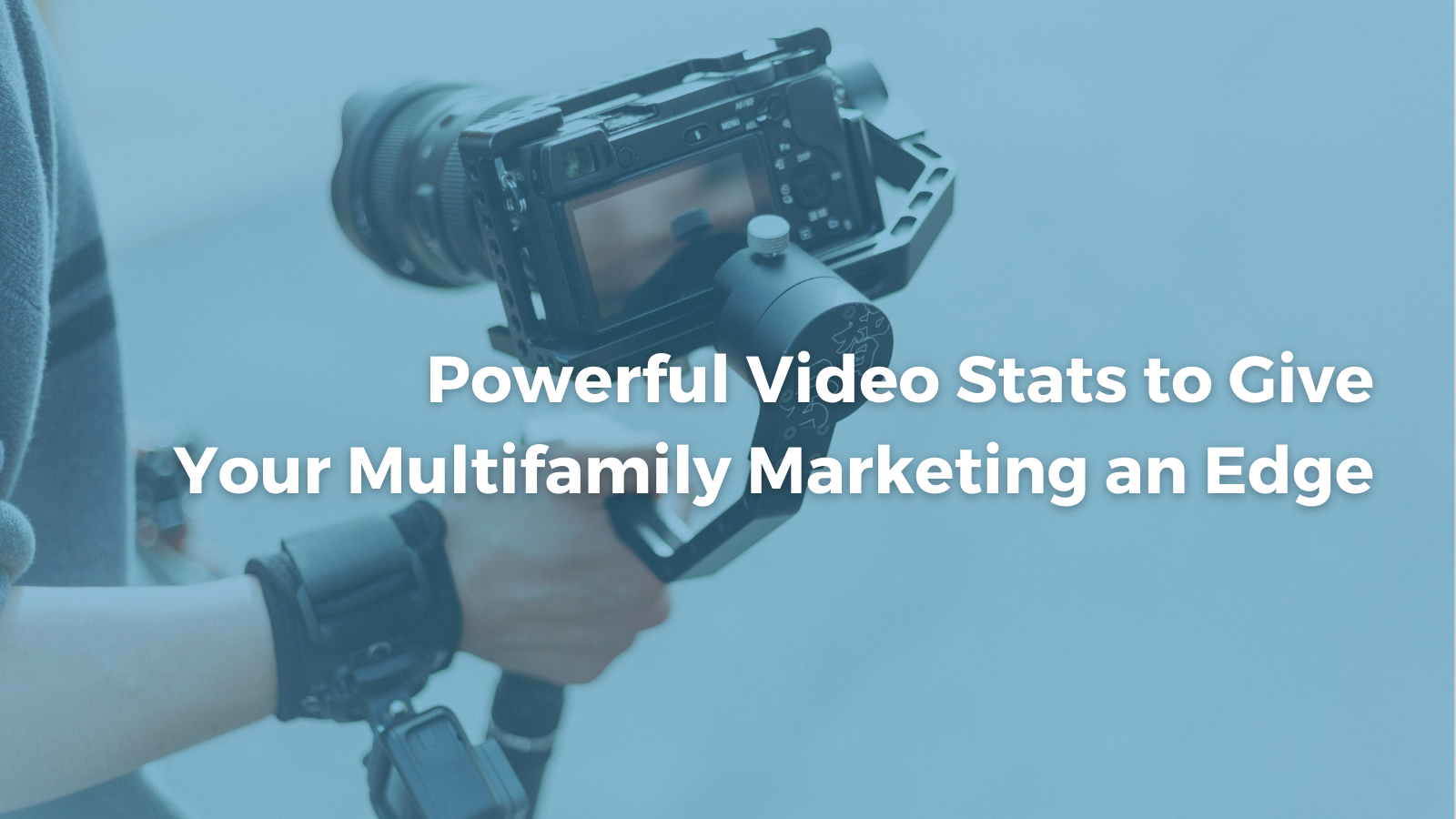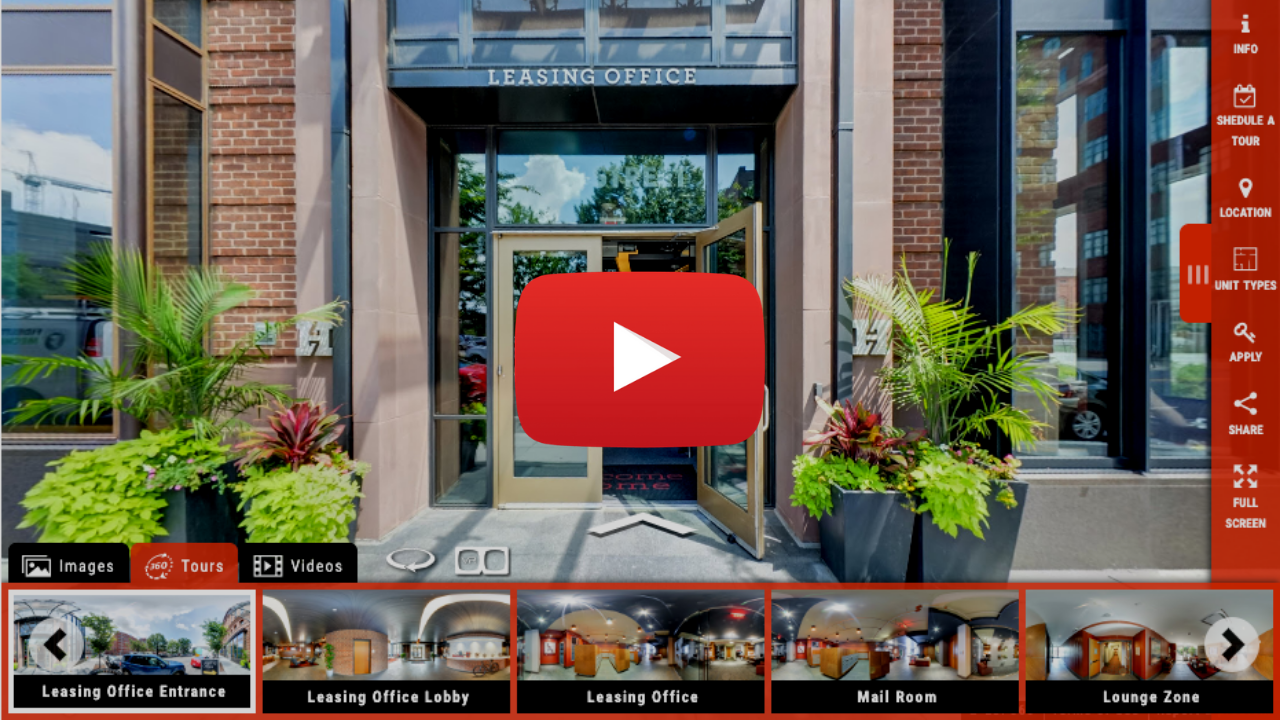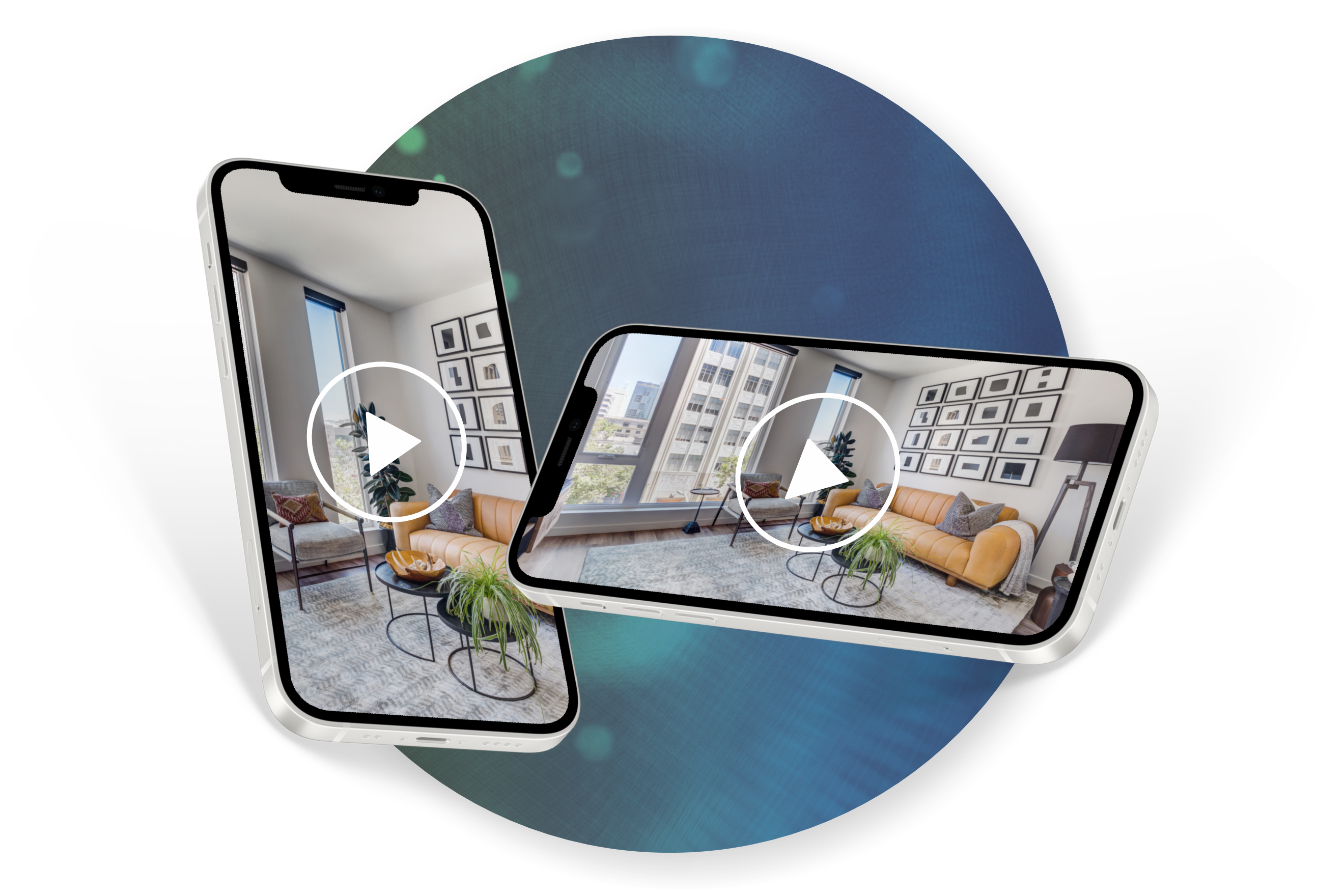Powerful Video Stats to Give Your Multifamily Marketing an Edge
From shifts in technology to an unprecedented pandemic, the way renters look for new apartments is much different than it was two years ago.
Video is the most powerful tool on the Internet today. Video not only allows people to engage with a brand but also allows businesses to engage with their audience authentically and excitingly.
Out of all internet users in the U.S., 85% watch online video content every month on their devices. Incorporating video in your digital marketing also leads to a strong influence over brand perception and buying decisions. For property managers and marketing professionals, it’s no secret that real estate video now plays an essential role in the industry, especially as the world settles into this new norm of social distancing.

The era of COVID-19 has put real estate professionals in a unique situation. While they can still maintain operations in a digital format that caters to the needs of buyers, renters, and sellers, resources may also be limited in producing any new video. Now more than ever, putting your current video content to good use is essential.
Whether you’re in the process of creating new video content or already have some ready to go, you’re a step ahead. Having great video content is one thing, but how you leverage your videos can make all the difference.
A lot goes into producing video; the last thing you want is to set it and forget it.
To make the most of your video investment, you need a video strategy that gets your content in front of viewers. Without viewers, you have no results. Here are are few places to get started sharing videos of your property:
Google My Business - Google My Business listings were created to deliver valuable information at the start of a buyer or renter’s search. And while Google listings have been known for years as a place for photos and virtual tours, you can also upload videos to your listings.
Because Google My Business sits higher in the marketing funnel, incorporating video on your listing can push users to your website to learn more. You can also add video content in the same section where you upload photos to your listing.
This is an effective channel to showcase any drone videography or fly-through video of your property. Learn more about Google My Business video requirements to get started.
Your Website - Your property’s website is your business's digital hub. This is where your video content can thrive. Testimonial videos, fly-through b-rolls, and drones can help visitors decide about your property.
Consider adding your popular testimonial videos to your homepage and property video on your gallery page or virtual tour section to engage website visitors.
YouTube - YouTube is the second most popular website after Google. Think of YouTube as a center for all of your video content. You can easily link to, embed, and share videos with YouTube instead of sending raw files. YouTube also allows 360 content, allowing users to engage directly with the video. Check out a 360 video tour on YouTube to see this in action.
While YouTube may not be your audience’s go-to while looking for their next apartment home, making a video publishing site the core of your video content doesn't hurt. 49% of today’s renters are under 30, the most active demographic on YouTube. With an optimized channel and regular uploads from your property, YouTube can become a valuable resource for visitors during their property hunt.
Social media - Social media posts with videos have 48% more views. And if you already have the content to work with, you can easily upload this media to your social channels. Like YouTube, Facebook is another resource where you can upload all your video content for users to browse.
Regarding video on social media, it’s essential to have an organized thought process. Try to treat YouTube and other social channels a little differently. For example, as a management company, having one YouTube channel to showcase all your available properties is ideal. Then, you can break down any video you have among individual property Facebook pages, Instagram, etc.
Email - Adding video to your emails can increase click rates by 300%. Whether you’re sending a follow-up email after giving a property tour, reaching out to your leads, or running an email campaign, the chances of engagement are significantly higher with a video link.
Knowing where to channel your property videos is half the battle. How you leverage your videos to market your property is the actual test of your video strategy. If you’re sitting on a pile of video content but aren’t quite sure where to go with it after uploading it to your main channels, here’s where to begin:
It’s not enough to upload your videos to the proper channels. You want to ensure those looking for your business can find your information.
Create an optimized system to have consistent titles, categories, descriptions, and engaging thumbnails on YouTube and Facebook. This includes appropriately sizing your thumbnails and taking color and text into consideration. Bright colors and bold text tend to see higher click-throughs.
Don’t forget to add descriptions to Facebook and YouTube videos and categorize them appropriately. If you have a lot of videos to work with, organization will be on your side.
If you have a lot of similar video content, build a campaign around it and track it. Video campaigns are the perfect way to automate your lead generation to stay top of mind. Here are a just few other ideas to fuel your video campaigns:
With more people working from home, resources to produce videos may be limited, but there are ways to continue creating new videos. On-site staff and leasing agents can create walk-through videos using their smartphones. Of course, you don’t want to sacrifice quality, but the option is there. Your team can also go live from Facebook or Instagram and hold digital “open houses” for followers.
If you’re seeking high-quality video (which produces much higher results), video professionals can visit your property on-site and work autonomously to capture any features or amenities you want to highlight.
While you may have a strong portfolio of videos to work with already, there are even more ways to engage your audience virtually.
Not to be confused with video, virtual tours are a powerful tool to include on your website and share with your audience. You can offer interested prospects online “open houses” and virtual meetings.
Some virtual tour viewers, like TourBuilder, can also include videos you already have to create an immersive experience for the viewer.
Real estate video is no longer an elective option, and while resources may be limited as we all work to social distance, be sure to use the video and resources you already have.
Renters are still renting, and people still need new homes — they’re just searching in new ways. Cater to the needs of your audience, and you’re sure to drive occupancy in our digital world.
Looking to create new video content but not sure where to start? Check out the latest blog from G5 on video basics, then download the video checklist from G5 to get started.

From shifts in technology to an unprecedented pandemic, the way renters look for new apartments is much different than it was two years ago.

Short-form videos have taken the internet by storm. Why? We live in a world where attention spans get shorter by the day. So this is no surprise....

At LCP Media, we are happy to introduce our latest innovation: TourBuilder Clips. Using the power of videos and GIFs to deliver captivating visual...
